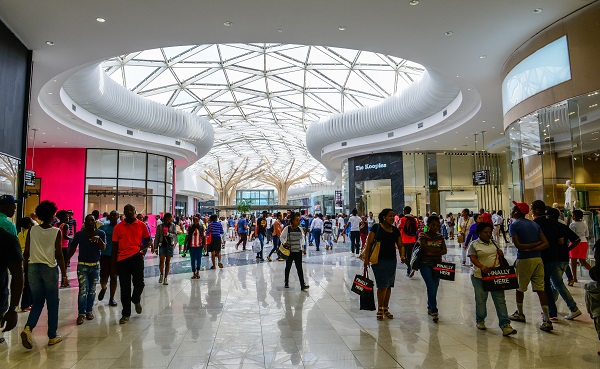

Follow us on:  
|

South African GDP growth held back by inventory depletion as resurgent demand outpaces ability to deliver the goods

File photo: The Mall of Africa in Midrand, near Johannesburg, South Africa [Xinhua]
There was, however, inventory depletion amounting to R5.527 billion ($403 million) in the third quarter after a R5.767 billion ($420 million) addition in the second quarter. The R11.294 billion ($823 million) swing in inventories meant that gross domestic product (GDP) growth saw a 1.5 percentage point subtraction purely from the change in inventories.
As any good economist will tell you, one should look at final demand to assess the strength of an economy, even if it is GDP growth that dominates the headlines.
Inventory replenishment and surging net exports were supposed to be the drivers of economic growth this year, but it now seems as if domestic households, which account for some 60 per cent of economic activity, are joining the party as well.
In both August and September, real retail sales grew by 5.4 per cent year-on-year (y/y), which was the highest y/y increase since May 2013.
This brought the increase for the third quarter to 4.1 per cent y/y, almost double the 2.2 per cent y/y rise seen in the second quarter. The recovery in consumer demand was not confined to retail sales as new vehicle sales have shown a y/y increase from June to November with November sales up 7.2 per cent y/y.
The surprise in the third quarter data was that there was recovery in gross fixed capital formation given the fact that business confidence is so low given policy uncertainty, ratings downgrades to junk status and two very unpopular cabinet reshuffle that led foreign investors to question the wisdom of the government and whether it knows what it is doing.
After a 2.0 per cent q/q saa drop in the second quarter there was a 4.3 per cent rebound in the third quarter.
This was the strongest quarterly increase in fixed capital formation since the third quarter 2015 and brought the decline in gross fixed capital formation in the first nine months to only 0.2 per cent y/y compared with a Treasury forecast of 0.6 per cent for the full year made by Treasury in October.
Treasury had anticipated only subdued domestic demand with household consumption only expected to grow by 1.0 per cent this year. Instead, household consumption expanded by 1.4 per cent in the first nine months, which is why wholesalers and retailers had to deplete their inventories to satisfy burgeoning demand.
That demand surge was based on solid income advances, as the compensation of employees grew by a nominal 7.9 per cent y/y in the third quarter from a 7.1 per cent y/y gain in the second quarter and only a 6.8 per cent y/y rise in the first quarter.
The bottom line is that the South African economy has exited recession and is on its way to surprising most economists with its renewed vigour.
Helmo Preuss in Cape Town, South Africa for The BRICS Post